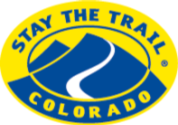Passing Other Vehicles
“Slow down for your fellow riders.”
Let ‘Em Pass
Pull over to the side of the trail and stop to let faster vehicles pass. Choose appropriate places to allow others to pass and be patient with other trail users. Avoid sensitive vegetation when parking along routes.
Generally speaking, slower vehicles should yield to faster vehicles and descending vehicles should yield to climbing vehicles but there are always exceptions depending on the locations of the vehicles relative to obstacles on the trail.
With wide vehicles on narrow trails, effective communication with the other vehicle and letting them know your intentions is vital. Citizens band (CB) and ham radios can be useful if you can see another approaching vehicle but are out of speaking range with each other.
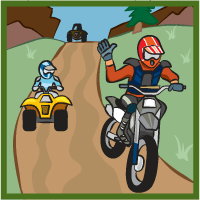
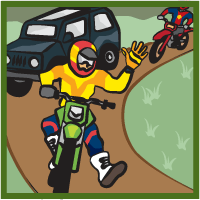
When another vehicle approaches from behind, signal your slowing to let them pass then move to right side of trail. Do not leave trail surface and flatten vegetation.
When approaching another vehicle from behind, pass on the left, keeping a safe distance and speed. Once past, let them know the number of remaining vehicles in your party. This can done by speaking to them or using hand signals.
Finally, understand vehicle differences. Motorcycles have a certain minimum speed they can travel before they want to flop over, especially on rough, rocky, or uneven surfaces. When passing a full-size 4WD vehicle, be patient. It can take a while for them to maneuver to the side of the trail. Motorcycle, ATV, and Side by Side riders need to be mindful not to roost the vehicles they just passed. Nobody likes a cracked windshield or a mouthful of dust.
Keep Count
When passing or meeting other riders on the trail, give them a hand signal to let them know how many riders are left behind you in your group.
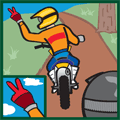
Two Riders Behind Me
Two fingers means you have two riders behind you.
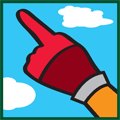
One Rider Behind Me
One finger means you have one rider behind you.
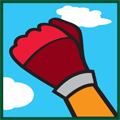
I'm the Last Rider
A closed fist means you’re the last vehicle in your group.
Use five fingers if you have five or more riders behind you. When you see the closed fist, the trail is clear for now but remain alert for other groups.
Keep Your Wheels Where They Belong!®
And finally, remember:
Drive on designated motorized routes where such designations have been made.
Where no designations have been made, drive only on existing routes until designations are made.
On public lands managed by the Forest Service, use motor MVUMs to determine which trails and roads are open to your vehicle.
On public lands managed by the Bureau of Land Management (BLM), follow on-the-ground signs to determine which trails and roads are open to your vehicle.
